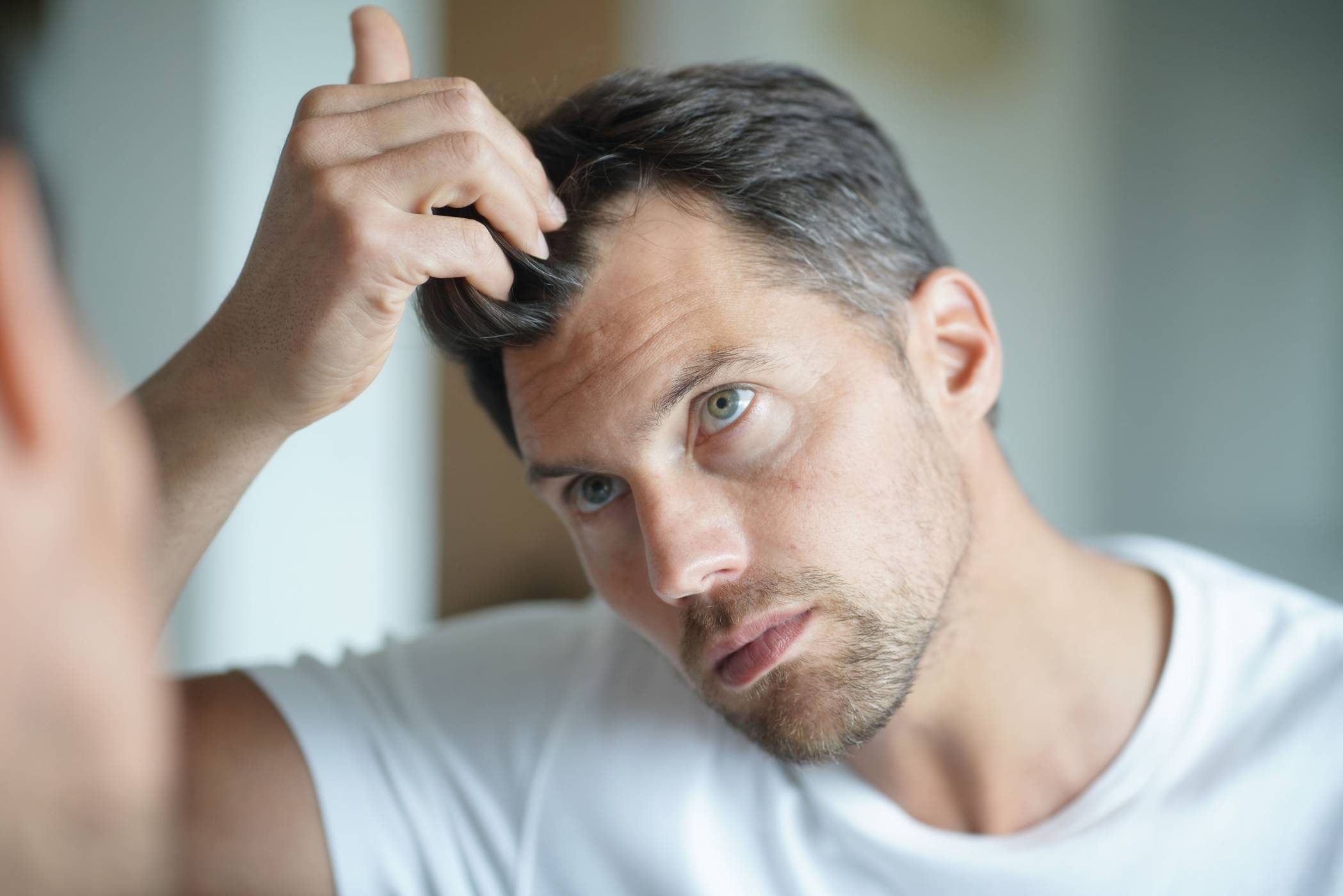Hair loss is not only a physical problem
Hair loss is a universal problem that affects both men and women and can affect patients of all age groups.
Hair is not an accessory but rather an integral hallmark of our appearance and our personality. Hair is so diverse, with endless possibilities of texture, shape, density, and color.
It frames our face and is visible, it's very hard to cover or hide. So hair loss can be a very distressing problem, it can cause so much frustration, anxiety, depression, and lack of self-esteem.
The male patient with Hair loss
In my practice of
hair loss, I find especially frustrating the roller coaster of emotions that
accompanies hair loss. Every day my patients wake up thinking: this is the day
my hair loss will stop and when it progresses they are devastated.
All patients of all
age groups seek my attention, but today I would like to focus on
androgenetic alopecia otherwise known as male pattern hair loss.
I have found myself
very devoted to this sub-type of hair loss, after years of following the
journey of men with hair loss.
I have seen many patients start losing their hair as early as age 13.
This young male
patient opened my eyes many years ago and lead me to my passion for hair
restoration for the middle-aged man.
I cannot overemphasize the
number of patients I have examined, that are not even aware there are
solutions, and that surgical hair restoration is within their reach. Some men
are not even aware that they do not have to live with a bolding crown or a
receding hairline.
Times have changed, the work environment is very competitive and professional middle-aged men are in a very competitive market. Times have changed because preserving appearance is synonymous with health.
Androgenetic alopecia: so common
Androgenetic alopecia will
first manifest with slight regression of the frontal hairline and broadening of
the four head and in more advanced stages will result in a hairline that looks
like the letter M. Concomitantly there is hair loss in the crown area and
Visibility of the scalp. The top of the scalp will become shiny and is very
embarrassing for a lot of men in fact some of my patients make a point not to
sit down on shorter chairs or have many people walk behind them. There are a
few men that manage baldness by shaving off their hair completely, but this
look does not agree with all men.
Of course, there is a huge genetic component and when the gene turns on it can be hard to turn it off. The gene can be transmitted from both sides of the family and can be transmitted from female and male members of the family alike. So the big question is if this is genetic is it inevitable and the answer is more than likely of course there are measures to slow it down and to try to prevent the inevitable. The earlier the patient seeks attention the better the outcome. However a lifelong topical and a lifelong pill with potential side effects is not necessarily the solution for all men either. And that's why today I would like to focus even more on the surgical option of hair restoration otherwise known as a hair transplant.
Debunking the myths of hair transplantion procedure
I personally prefer to use the
terminology: surgical restoration vs hair transplantation, I know this word is
intimidating to many patients.
When we think of transplants, we think of kidney transplants, heart transplants, liver transplants, and bone marrow transplants and all these procedures are very serious. The closest donor is identified and the organ in question I harvested and transplanted into the donor. The patient is usually under general anesthetic and requires extensive preoperative workup and extensive post-operative workup, including chronic immune suppressants.
Surgical hair restoration is
much more straightforward. The donor is you, and the donor site is usually the
back of your scalp where hair follicles resist the effect of hormones and
shedding.
Since your hair follicles are part of your genetic makeup you will not need any immune suppressants. Your body will not reject the relocated hair follicles. Of course, there are strategies to maximize the chances of success of the procedure. That is why it is very important to find a hair specialist who is not only committed to the procedure itself but committed before during and after.
The procedure itself is
performed under local anesthetic and most of my patients are extremely
comfortable. It is a same-day minor surgery after which the patient is
discharged home.
Of course, different patients
heal differently but in my experience, the return back to normal routine is
exponential and happens over the course of very few days.
My patients tend to be very
busy and this is where the role of follicular unit extraction comes into play.
Individual follicles are
punched out using state-of-the-art technology from the occipital area are
inserted into the hairline and the front of the scalp or crown. My patients
love this option because there is no horizontal incision in the back of the
scalp and no sutures.
The donor sites heal very
quickly over the course of 24- 48 hrs. Even though the area itself is
shaved, hair grows back very quickly. What is very interesting is that
for a very short period of time the follicles that are transplanted will grow
short hair and the patient will have immense gratitude, this is a sneak preview
for the long-term outcome. This here well then shed and we grow over the course
of six months.
The most important
part other than the skilled surgeon and the highly specialized team is agreeing
with the surgeon on the design of your hair restoration. It is very important
that your hair surgeon will listen to you carefully while guiding you through
what is reasonable and unreasonable.
And it is even more critical to have a natural and aesthetically pleasing result.
My Priorities
Safety and comfort
are my priority mostly I find immense joy in being able to provide a hairline
that is cosmetically pleasing and meets the patient's expectations.
This is an art of
itself.
There is no one ideal
hairline, and there is no cookie-cutter design, every patient needs to be
individualized and taken care of in a very unique way and that's my pride.
Behind the scene
there is a lot going on to ensure at the hair follicle that is harvested is a
healthy hair follicle and that it is removed from its original habitat in the
gentlest way possible.
The hair follicle is
a very delicate and complicated structure it is one of the most unique organs
of your body.
The hair follicle to be extracted in a very special way at a very special death to ensure its sustainability. That is why it is crucial to have a hands-on surgeon that understands the hair follicle unit down to the cellular level. So in our office the hair follicle only counts if it is handled properly.
It is crucial that
all the expectations are clarified before the surgery and it is crucial that
all the patients questions and concerns are answered thoroughly. It is very
important to go over all components of the treatment.
All over the surgical
restoration has transformed over the course of many years, patients now have
access to safer, less costly, less invasive hair restoration options then many
years ago.
As we speak scientist
continue to strive to understand the hair follicles and the hair cycle and
there are many exciting discoveries that a await us. One thing we can say is
that the surgical hair restoration option is an attainable solution to many men
and it's boost their confidence level and self-esteem tremendously. This is
priceless for many of my patients





 Free Transplant Consult
Free Transplant Consult



